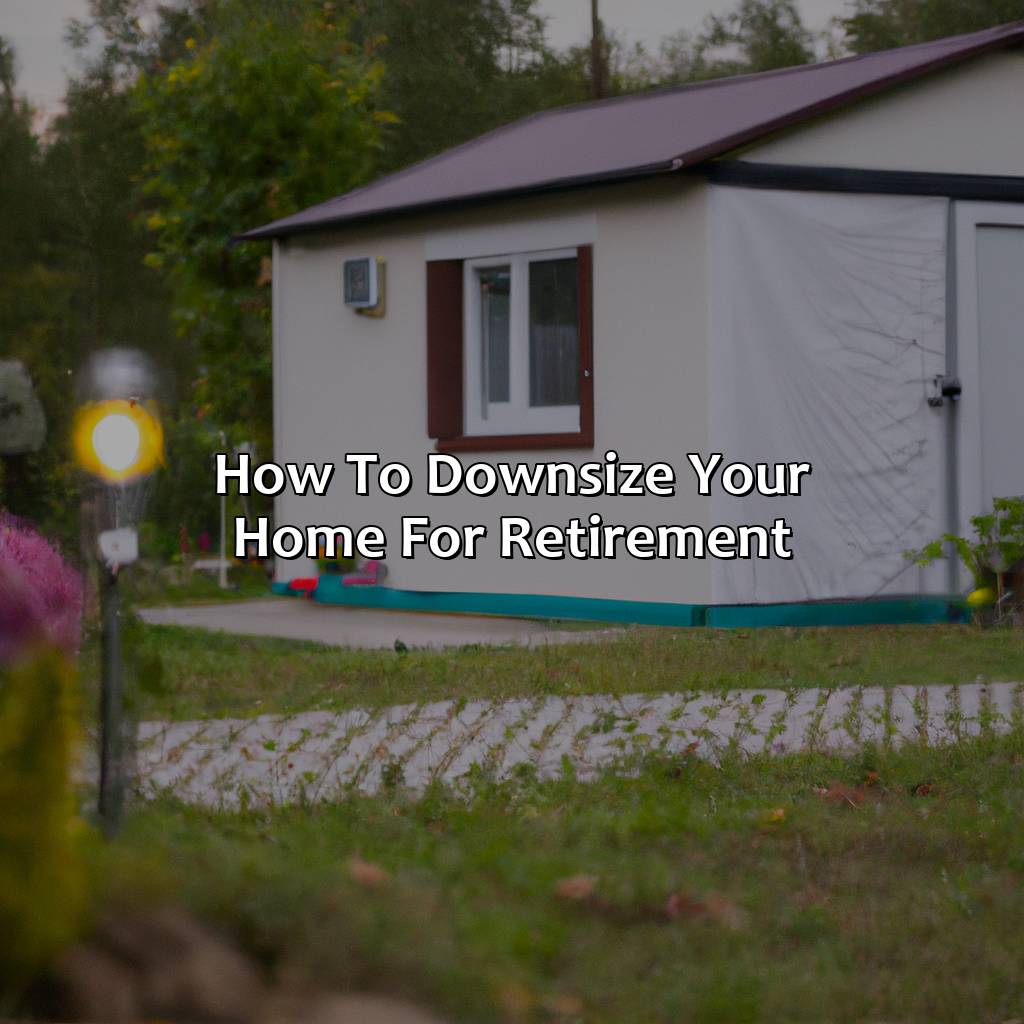How To Downsize Your Home For Retirement?
Key Takeaway:
- Assess your current needs: Before downsizing your home for retirement, take an inventory of your belongings and determine how much space you really need. Evaluate your financial situation to determine what type of home you can afford.
- Create a downsizing plan: Set a timeline and goals for your downsizing process. Decide what to keep, sell, donate or discard to simplify your move.
- Start the downsizing process: Sort through your belongings and consider hiring a professional downsizing service to assist you. Be mindful of sentimental items and focus on keeping what’s most important to you.
- Prepare for the move: Get help with packing and moving arrangements, and make sure to update your address and important documents. Take the time to adjust to your new lifestyle and embrace the benefits of downsizing, while staying connected with your community and loved ones.
Are you looking to downsize your home for retirement? You don’t want to sacrifice style or comfort while still achieving financial savings. This article will provide you with helpful tips to ease your transition and save you money.
Assess your current needs
Assess your needs for downsizing your home for retirement. How much space do you need? Evaluate your finances. Prioritize the essentials. Consider the financial aspects. Make downsizing your home a seamless journey.
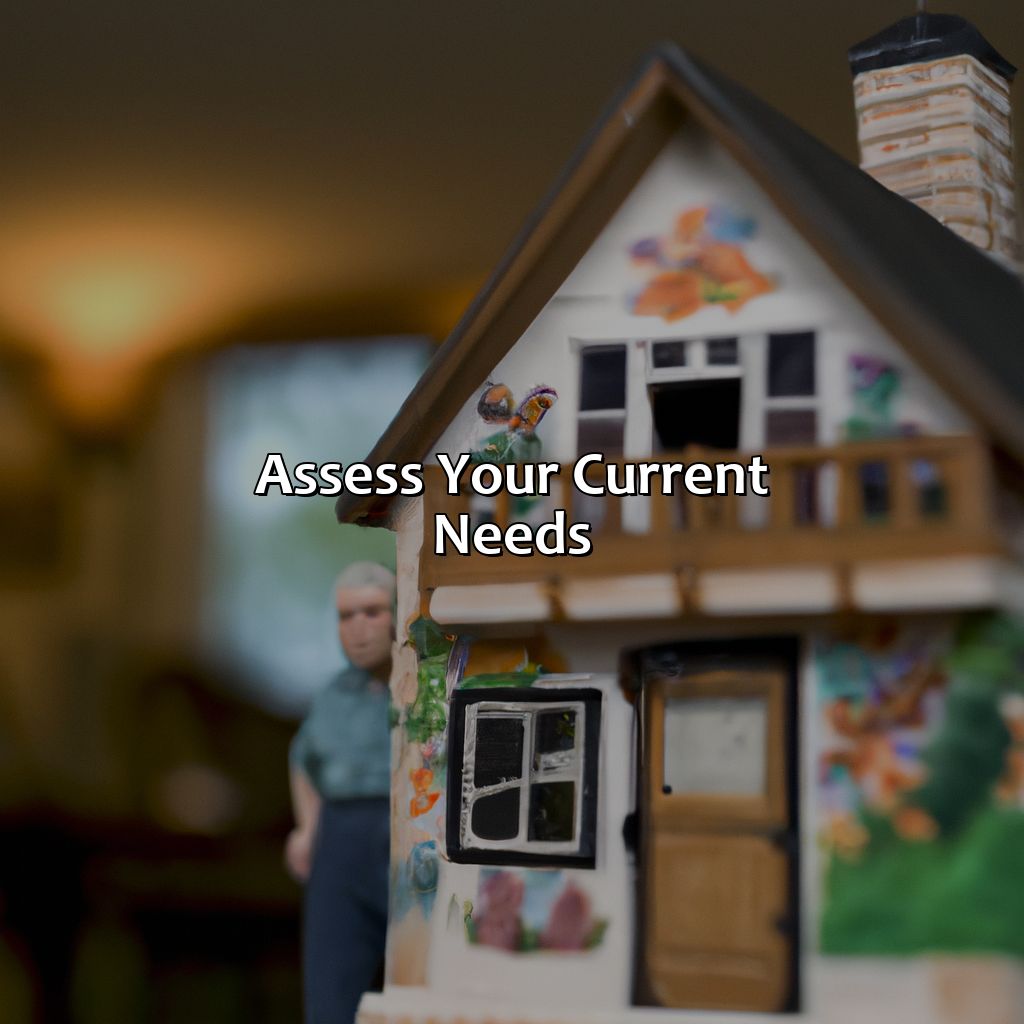
Image credits: retiregenz.com by Joel Arnold
Determine how much space you really need
To effectively downsize your home for retirement, determining the ideal living space is important. Understanding how much space you require without unnecessary clutter can help make the transition smoother. Evaluate your current lifestyle, future plans and family needs to determine precisely how much living space is essential.
Consider factors like desired quality of life, housing location and mobility while deciding on ideal living space for retirement. Assess your need for extra rooms or features such as a home office, exercise room or guest accommodation. By setting clear priorities and understanding required spaces, you can ensure a comfortable lifestyle in retirement.
Think about your daily routine and consider which spaces you use most frequently in your current home. Assess if these areas can be reduced or adjusted to meet future requirements to save on physical space. Keep in mind that as physical changes occur in elderly age, opting for open floor plans with wider halls and doorways will create ease of movement.
A retired couple downsized their house from 2100 to 1600 square feet by redesigning their space with an open floor plan including multifunctional pieces such as a Murphy bed that doubles as an office desk. This allowed them to enjoy greater ease of movement while maintaining convenience in terms of usage of furniture.
Get ready to face the harsh reality of your finances, because the only thing downsizing won’t shrink is your debt.
Evaluate your financial situation
Assessing one’s financial status is crucial while downsizing for retirement. It is essential to evaluate your current monetary situation to determine the best course of action. Consider your monthly expenditure, sources of income, and assets when deciding on downgrading your home.
Reducing living expenses becomes imperative during your post-retirement phase. Analyzing money outflows accurately gives a better perspective on required downsizing. You need to prepare yourself financially for unexpected contingencies and unanticipated expenses in the future.
It is advisable to start discussing financial plans with an experienced professional or advisor specializing in real estate or finance to obtain expert advice. They can guide you through different options that match your requirements and suggest excellent strategies to boost savings or prepare you for the long haul.
I remember reading an article about a couple who decided to retire but wanted a smaller apartment near their grandkids’ school. They kept evaluating properties they could afford before finalizing their new home’s location and size. Their decision proved wise as it matched their needs without any compromises, leaving them with more spare time and money at hand.
Downsizing your home for retirement is like playing Tetris with furniture, but instead of getting points, you get peace of mind.
Create a downsizing plan
Create a downsizing plan for retirement? Set a timeline and goals! Don’t procrastinate.
Decide what to keep. Also, decide what to sell, donate, or discard.
A clear timeline and goals make it easier. Then make decisions on items.
Keep, sell, donate, or discard? You decide!
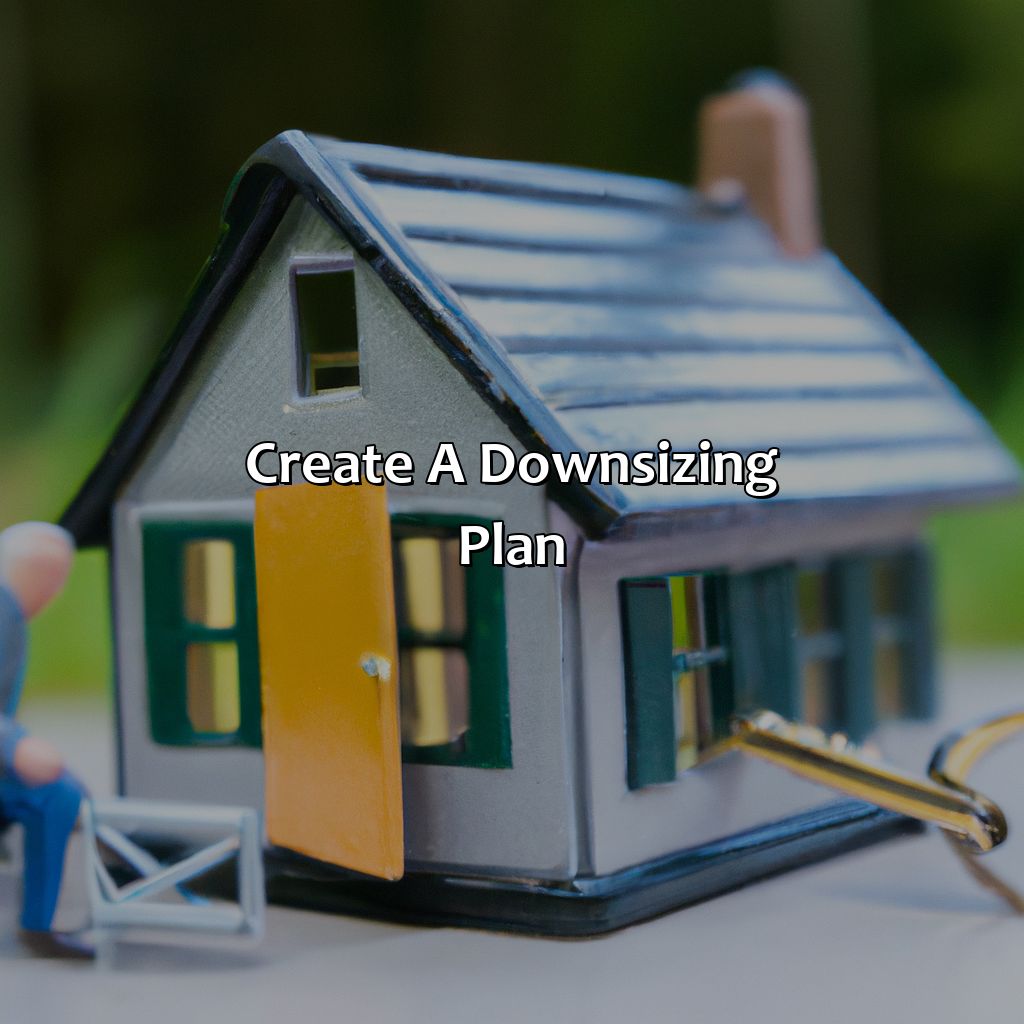
Image credits: retiregenz.com by Harry Woodhock
Set a timeline and goals
To ensure a successful downsizing plan, it’s important to establish a clear timeline and goals. This will help you stay focused and motivated throughout the process, while also allowing you to track your progress and make adjustments as necessary.
Here is a 5-Step Guide to help you Set a timeline and goals for downsizing:
- Identify Your Priorities: Start by making a list of what’s most important to you when it comes to your new home. This may include things such as location, square footage, amenities, or proximity to family and friends.
- Set Specific Goals: Based on your priorities, set specific goals that are measurable and achievable within your desired timeframe. For example, if you want to move within the next six months, your goal may be to sell your current home within four months.
- Create a Timeline: Once you have established your goals, create a realistic timeline that outlines specific steps and milestones along the way. Be sure to build in some flexibility in case unexpected issues arise.
- Track Your Progress: To stay on track with your downsizing plan, regularly evaluate your progress against your goals and adjust as needed. Celebrate small successes along the way to keep yourself motivated!
- Seek Professional Help: If needed, consider hiring a real estate agent or professional organizer who can help simplify the process and guide you through each step.
It’s important to remember that downsizing can be an emotional process as well as a practical one; be kind to yourself as you navigate this transition.
Finally, here’s a Pro Tip: When setting timelines for each step of the downsizing process, be sure to build in buffer time for unforeseen circumstances like delays in paperwork or unexpected repairs. This will help prevent stress and frustration down the road.
Remember, one person’s junk is another person’s treasure-until they realize it’s just junk.
Decide what to keep, sell, donate or discard
When preparing to downsize your home for retirement, a crucial aspect is deciding what to keep, sell, donate or discard. This involves making important choices about the possessions you’ve accumulated over time.
- Make a list of items that hold sentimental value. Consider whether these items will fit in your new home and whether it makes sense to take them.
- Evaluate each item based on usefulness and practicality. If an item doesn’t serve any real purpose, consider letting it go.
- Decide which items can be sold or donated. Consider local charities, thrift stores or online marketplaces as potential options.
Once you have narrowed down your possessions, you may find yourself with a few difficult choices to make. Remember that downsizing can be an emotional process, but ultimately it will provide greater freedom and less stress in retirement.
By not taking action now and creating a downsizing plan, you could potentially miss out on the opportunity to live more comfortably and less encumbered during your retirement years. Take the time to begin this process sooner rather than later so that you can fully prepare for the next chapter of your life.
Time to Marie Kondo your life and ditch everything that doesn’t spark joy – including that antique vase you inherited from your great-grandma.
Start the downsizing process
Start downsizing with “Sort through belongings” and “Consider a professional service” as solutions. This will guide you in making decisions on what to keep, donate or discard. Also, consider a professional service. It can help streamline the process.
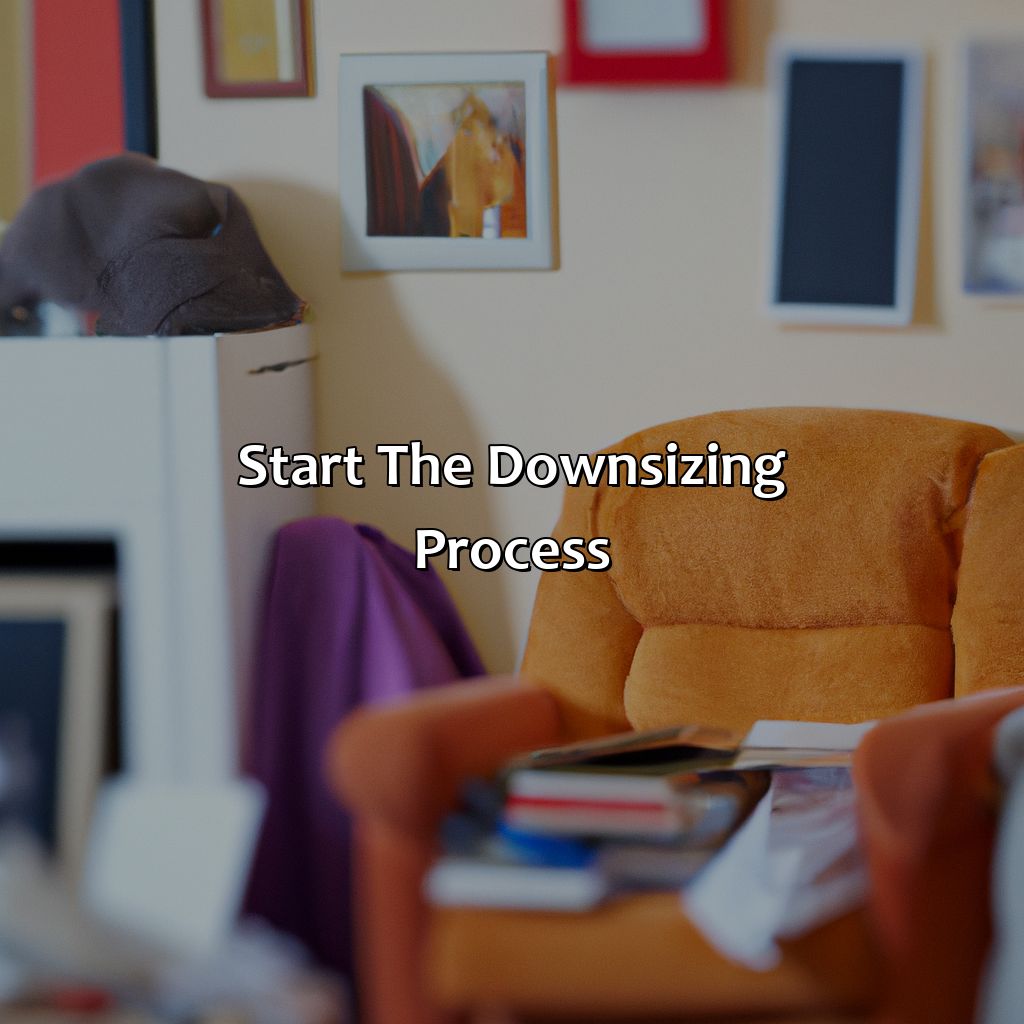
Image credits: retiregenz.com by Harry Washington
Sort through your belongings
Organizing your possessions – How to tackle the task of decluttering when downsizing for retirement?
- Begin with a plan: Evaluate your lifestyle and identify essential items that fit into your new space.
- Start small: Commence with less emotionally valuable things before tackling personal belongings of sentimental value.
- Sell what you don’t need: Determine which objects are beyond repair or no longer useful; decide if it’s worth donating or selling.
- Sort systematically: Work through each room in fast, medium, and slow, stacks.
- Repeat as necessary: Periodically revisit the process to remain organized and in control.
Adopting best practices for sorting will help make transitioning into smaller living spaces more manageable. When sorting go through items room-by-room diagonally, rather than focusing on individual furniture pieces to keep it efficient and streamlined.
Reduce clutter and maintain organization by using multi-functional furniture options such as storage beds to avoid filling up closets or drawers.
Uphold a respectful environmental accounting philosophy by repurposing old items, donating them to charity centers or giving away items to friends & family in need, wherever possible helping others leads back to social capital in irrevocable ways.
Take advantage of technology such as online marketplaces/yard sales to potentially earn money while downsizing, bear (pun intended) in mind these marketplaces can fluctuate so do not gamble all your profit off timing factors alone.
Take the stress out of downsizing and let the professionals handle it, because your retirement should be about relaxation, not lifting heavy boxes.
Consider hiring a professional downsizing service
One possible literal meaning for the heading ‘Consider hiring a professional downsizing service’ could be ‘Explore enlisting expert help for downsizing your home upon retirement’.
Downsizing can be a daunting process that requires careful organization, decision-making and physical labor. Hiring a reputable downsizing service can provide crucial assistance in managing this transition effectively. Professionals can guide you through the essential steps of decluttering, selling or donating items, and determining what to take with you to your new home.
Enlisting expert help can also alleviate the emotional stress and attachment that often accompanies downsizing. Professionals know how to handle sentimental belongings with care and sensitivity while respecting your goals and preferences. They can provide valuable advice on space optimization, storage solutions, packing methods, moving logistics and more. A reliable downsizing service will tailor its approach to your specific needs and work collaboratively with you at every stage.
It’s worth noting that engaging a professional downsizing service comes at a cost. It’s essential to research different options thoroughly and inquire about their fees, experience, certifications, insurance and references before making any commitments. Ask for a detailed contract that outlines the scope of work, payment terms, confidentiality policies and dispute resolution procedures.
One client who appreciated the assistance provided by professionals is Janice R., who recently downsized from her large family house to a smaller apartment after retiring. As she recalls: “I was overwhelmed by the amount of stuff I had accumulated over the years. But when I hired a downsizing service, everything changed for the better. The team was knowledgeable, compassionate and efficient in helping me sort through my possessions respectfully. They helped me let go of things I no longer needed or wanted while preserving cherished memories. Thanks to them, I now feel lighter, happier in my new place.”
Remember, downsizing your home is like a game of Tetris – except instead of fitting blocks, you’re fitting all your belongings into a moving van.
Prepare for the move
Downsizing for retirement? Get help with packing and moving. Don’t forget to update your address and important documents. These are the basics. Focus on them for an efficient, effective move.
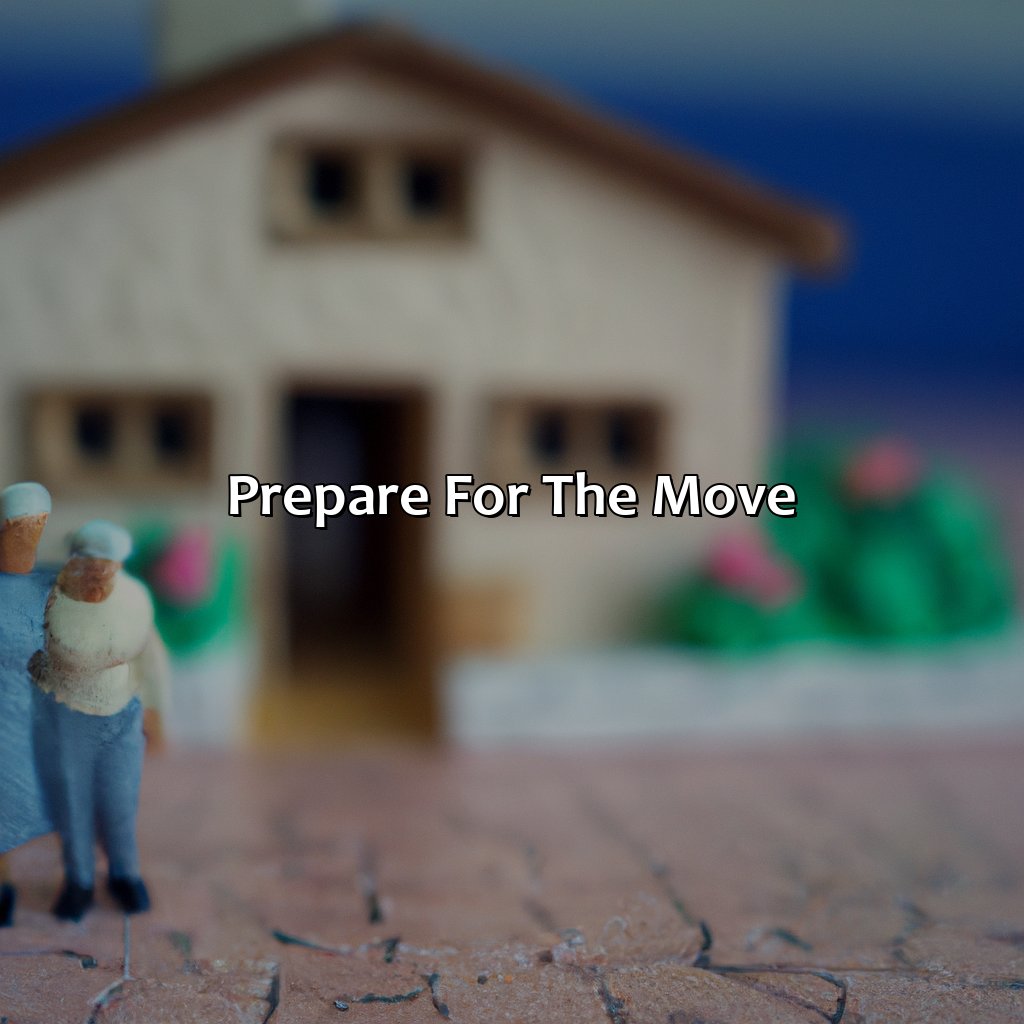
Image credits: retiregenz.com by Yuval Washington
Get help with packing and moving arrangements
If you require assistance with arranging your home packing and moving, here are some helpful options to explore:
- Request friends or family members who can offer a helping hand, if they are available.
- Hire professional packers and movers to handle the physical labor and logistics of your move.
- Consult a senior move manager who specializes in the downsizing process and provides resources for relocation services.
- Consider online platforms that offer freelancing labor, such as TaskRabbit or Thumbtack, to find reliable short-term-assignment personnel that fit within your budget.
Another valuable resource to explore is contacting local community groups or non-profit organizations, which may have active volunteer programs aimed at helping seniors with their moving needs. Be sure to research agencies well in advance as there could be eligibility criteria or waiting lists involved.
Don’t miss out on these methods to make your moving experience easier. Consider taking advantage of the ways mentioned above to reduce stress and achieve a smoother transitioning period. Make sure to update your address and important documents, or you might end up retired in the wrong state with your ex-spouse as your beneficiary.
Update your address and important documents
Updating Your Address and Essential Documents
To ensure a smooth and organized move, updating your address and vital documents is crucial. This includes notifying your bank, insurance provider, and relevant government agencies of your change in residence. Additionally, obtaining copies of important records such as medical information and legal documents should be a priority. Don’t forget to update your driver’s license or state ID with the new address.
It’s essential to have these up-to-date well before moving day to avoid complications or delays in receiving important mail or services at your new home. Remember, failing to update crucial information can result in penalties or identity theft.
A useful tip is to create a checklist of all the necessary documents and services that need updating and regularly tick them off as they get done. By doing this, you’ll remain organized throughout the process.
Did you know? According to the National Center for Health Statistics, approximately 25% of Americans aged 65+ move each year.
Get ready to trade in your mansion for a cozy cave, but don’t worry, the bears won’t mind the company.
Adjust to your new lifestyle
Embrace the benefits of downsizing your home for retirement! Divide it into sub-sections for a solution. Also, stay connected with your community and loved ones. It’s important to adjust to your new lifestyle.

Image credits: retiregenz.com by Adam Duncun
Embrace the benefits of downsizing
Downsizing your home for retirement can have several advantages.
- Practical benefits include saving money on property taxes, utility bills and maintenance costs, while also reducing clutter and making daily chores easier.
- Emotionally, downsizing can help relieve stress by simplifying your life and allowing you to focus more on what really matters to you.
- In terms of health, downsizing can also promote a more active lifestyle as smaller living spaces mean less sitting around and more opportunities for physical activity.
Overall, embracing the concept of downsizing can lead to a happier, healthier and more fulfilling retirement experience.
It’s important to carefully evaluate your current lifestyle when considering downsizing. Determine what items are essential to maintain your quality of life and what belongings you no longer need or use regularly. Consider how much space you actually require and look for homes that meet those needs without unnecessary extra square footage. When choosing a new home, consider factors such as proximity to medical facilities, transportation options, nearby amenities such as parks or community centers, and safety features like grab bars in bathrooms. By taking these steps when downsizing your home for retirement, you can maximize the benefits of this change.
Additionally, downsizing has been shown to have positive environmental impacts by reducing overall consumption of energy and materials needed for housing. This approach enables a shift towards more sustainable lifestyles compatible with the latest green initiatives.
In the past decade, many retirees have successfully adjusted their lifestyles by embracing the benefits of downsizing their homes. Senior citizens enjoy better mobility and accessibility after consuming this option during their golden years; sometimes relinquishing rural areas and moving back into city centers, becoming well-rounded members of society enjoying faster internet speeds only accessible in city districts providing them access to communication otherwise difficult in rural low power signal areas where they may have lived previously.
As retirees continue seeking lifestyle changes that fit their evolving lives post-retirement period- Downsizing proves itself effective over time ensuring maximum customer satisfaction giving everyone who embraces this change the freedom to enjoy their golden years in harmony.
Stay connected with your community and loved ones.
Staying connected with your social circle and relations is essential for maintaining a fulfilling retirement experience. Here are three ways to Stay Engaged With Loved Ones:
- Join social clubs or groups that match your interests
- Participate in volunteer work within your community
- Use technology such as video calls, emails, and social media to keep in touch
It is worth considering that staying active on these platforms will allow you to forge stronger relationships and stave off feelings of isolation. Besides, making new friends with people who share similar interests can deepen friendships and provide meaningful interactions.
A Pro Tip: Taking the initiative to organize gatherings with friends or extended family can be an excellent way to cultivate closer ties within your social network.
Some Facts About How to Downsize Your Home for Retirement:
- ✅ Downsizing can lead to lower living expenses, freeing up funds for retirement. (Source: Forbes)
- ✅ Start planning early and take your time to prepare for downsizing. (Source: US News)
- ✅ Make a list of what items are essential and what items can be discarded or donated. (Source: AARP)
- ✅ Consider the location of your new home and how it will impact your lifestyle. (Source: Investopedia)
- ✅ Keep in mind the emotional impact of downsizing and seek support from loved ones. (Source: The Balance)
FAQs about How To Downsize Your Home For Retirement?
How do I decide what to keep and what to get rid of when downsizing my home for retirement?
It’s important to take stock of what possessions you truly need and which ones may just be taking up space. Start by creating an inventory of everything in your home and then divide it into four categories: keep, donate/sell, give away to family/friends, or toss. Consider the size, weight, and frequency of use for each item to help with decision making.
What should I do with sentimental items?
Sentimental items can be some of the hardest to part with but it’s important to make a plan for them. Create a designated box or room for these items that you can go through with family members and decide what to keep and what to pass on. One idea is to take photos of sentimental items and create a scrapbook or digital album.
How do I pack up and move my belongings efficiently?
Start by decluttering as much as possible before packing. Use a labeling system to indicate which boxes go in which room and make sure to keep important items easily accessible. Consider hiring a professional moving company or enlisting the help of friends and family to make the process smoother.
Should I hire a professional organizer?
If you’re feeling overwhelmed or don’t know where to start, hiring a professional organizer can be a great option. They can help you create a plan, declutter efficiently, and make decisions about what to keep and what to let go of.
How do I make the most of my new smaller space?
Downsizing can be a great opportunity to simplify and create a more functional living space. Look for furniture that serves multiple purposes, like a storage ottoman or a Murphy bed. Maximize storage space by utilizing vertical space, such as tall bookshelves or hanging organizers, and consider investing in space-saving appliances.
How do I help my family understand my decision to downsize?
Communicate the reasons behind your decision to downsize and emphasize the positives, such as the opportunity to simplify and reduce expenses. Involve your family in the process by asking them to help you sort through items or come up with creative storage solutions. Help them understand that downsizing is not just about getting rid of things, but about creating a more intentional and fulfilling lifestyle.
